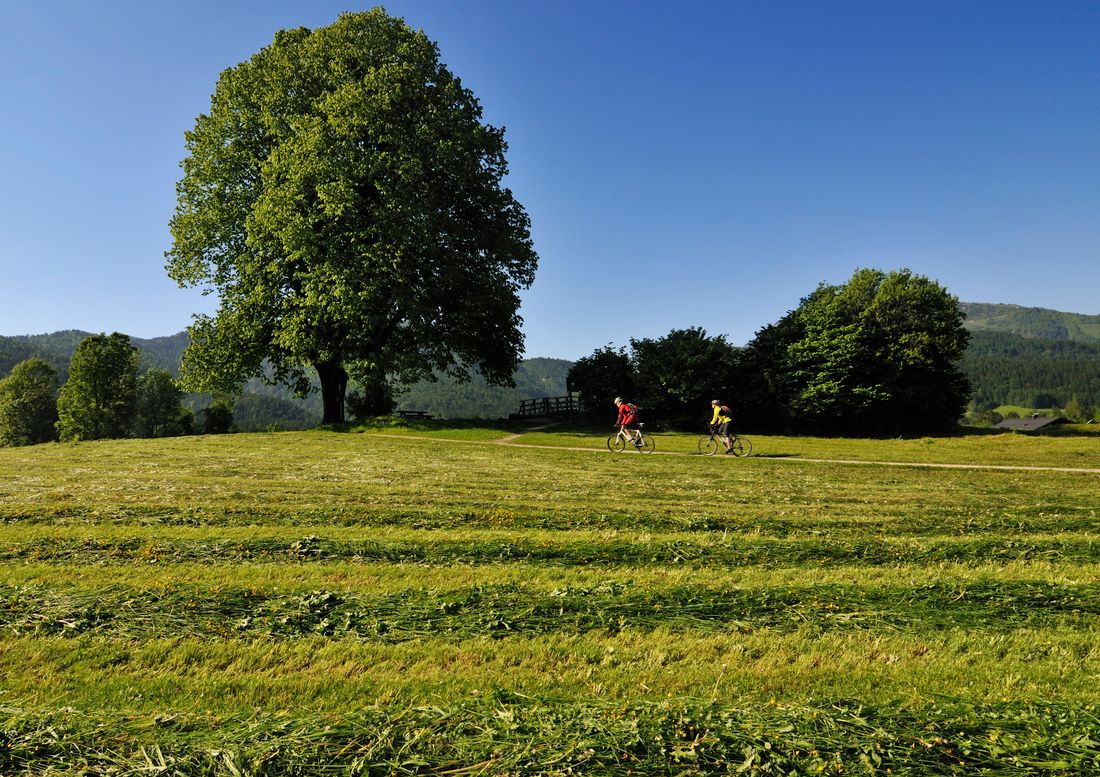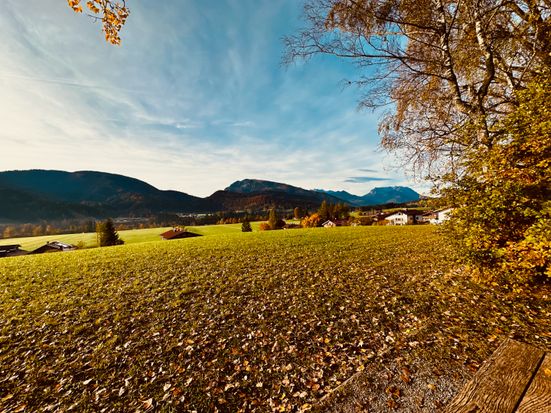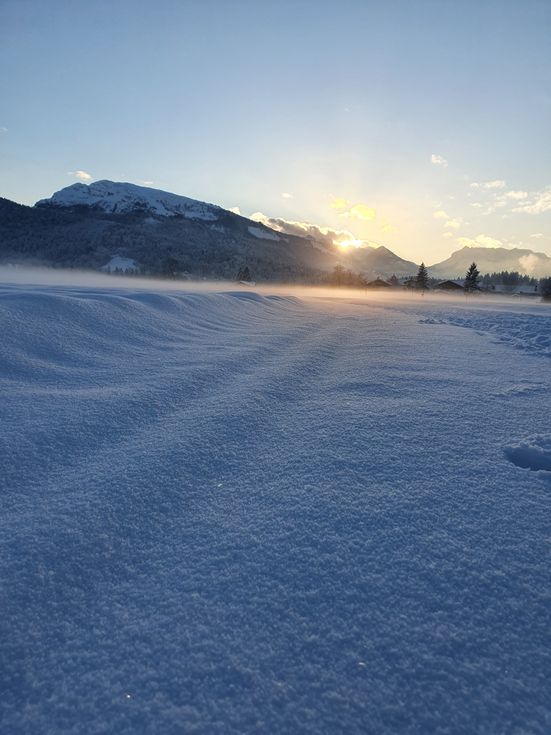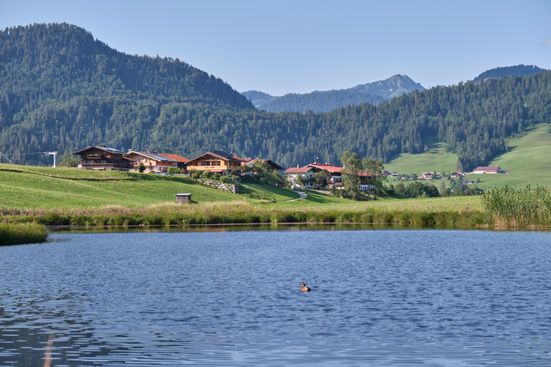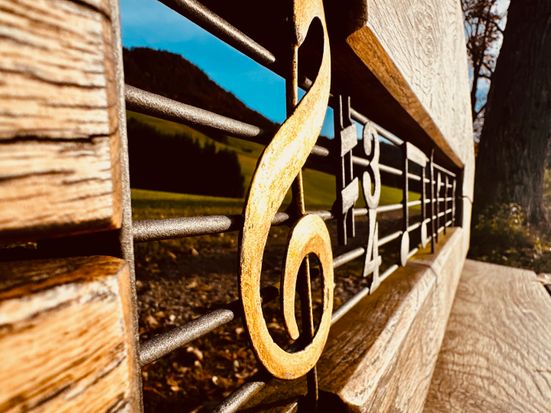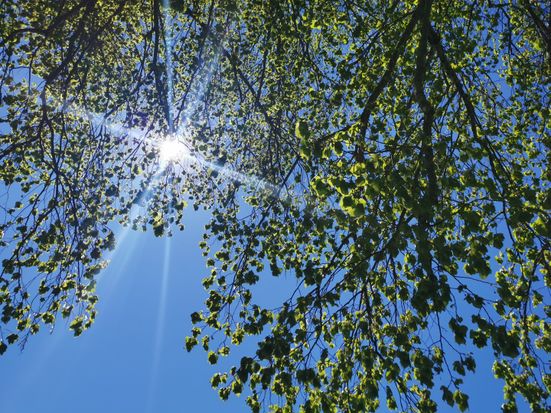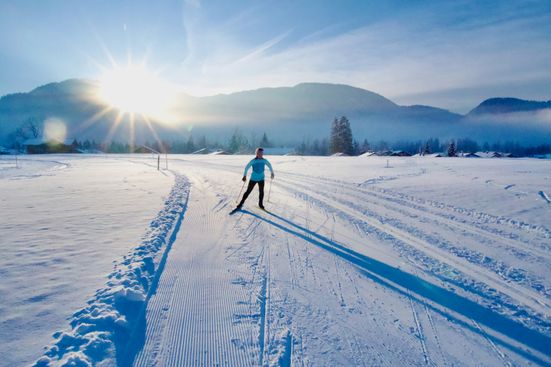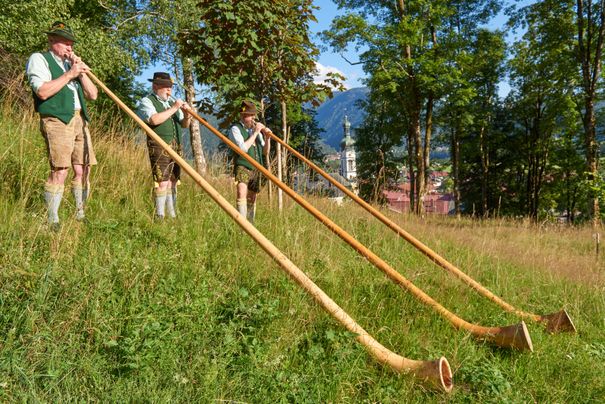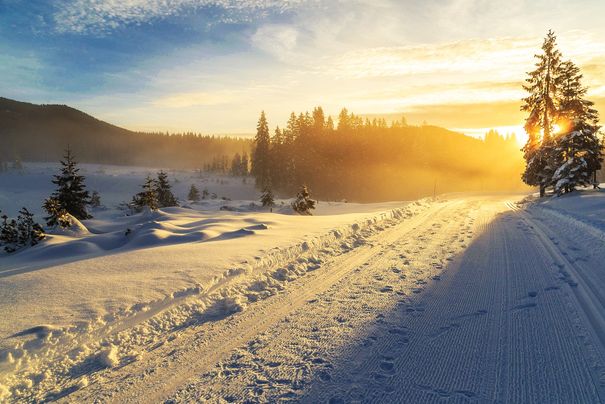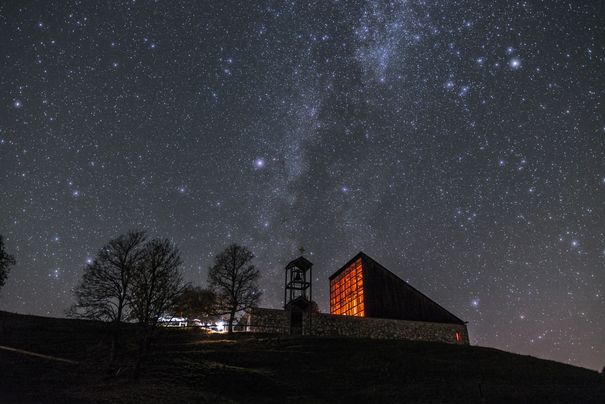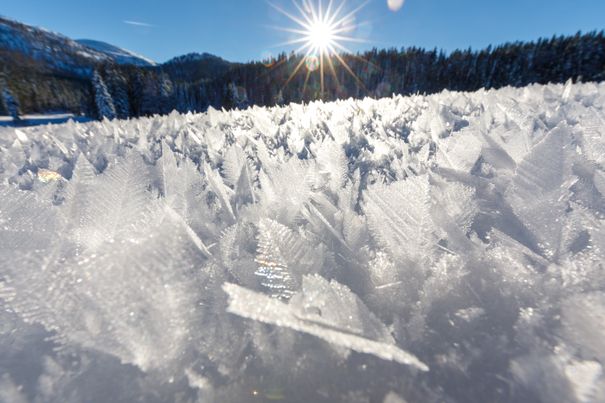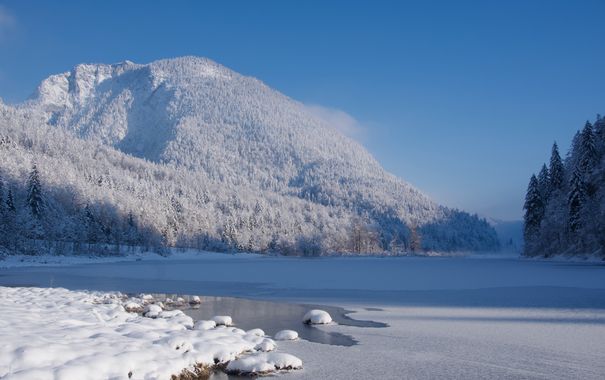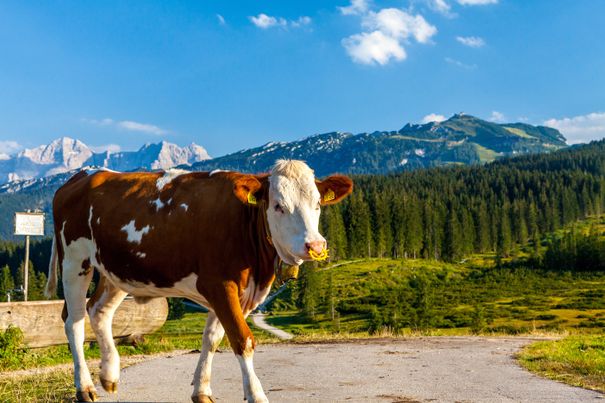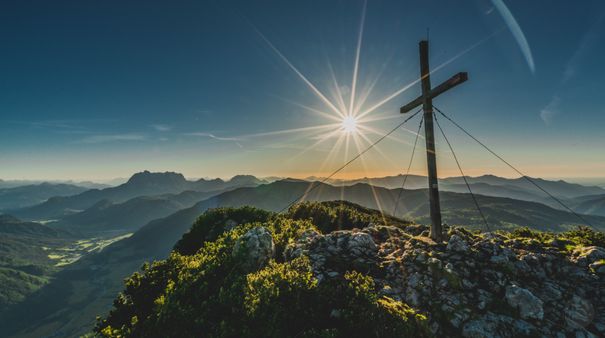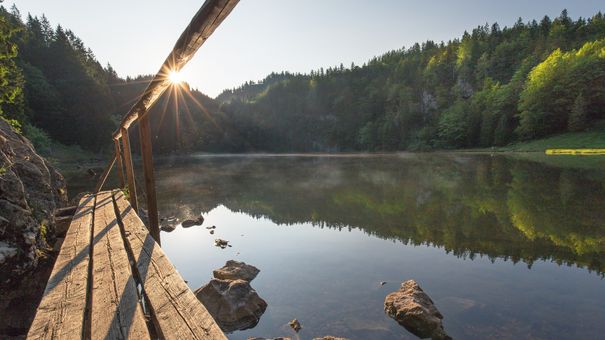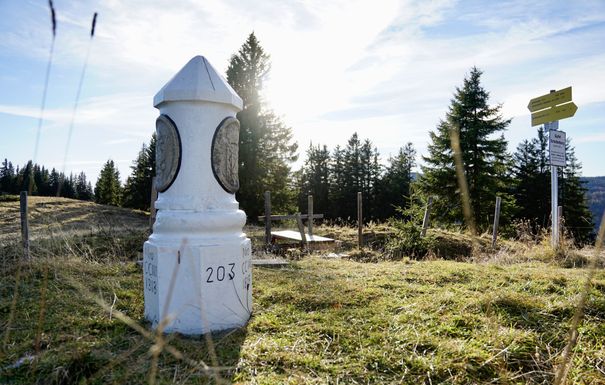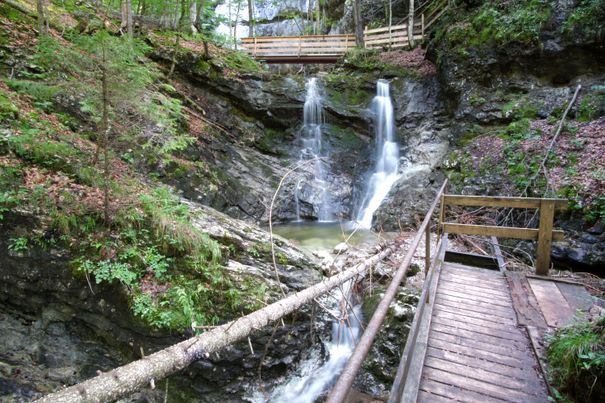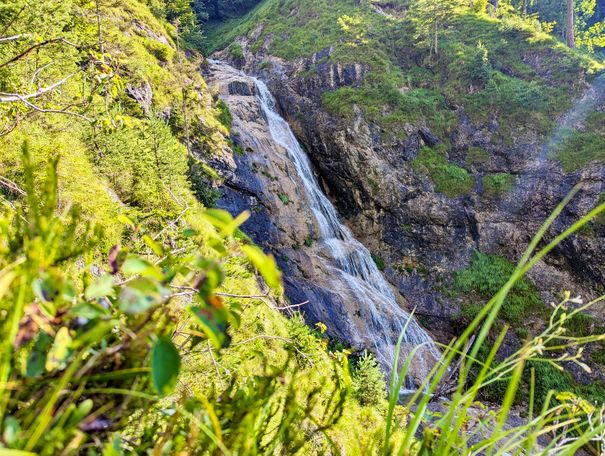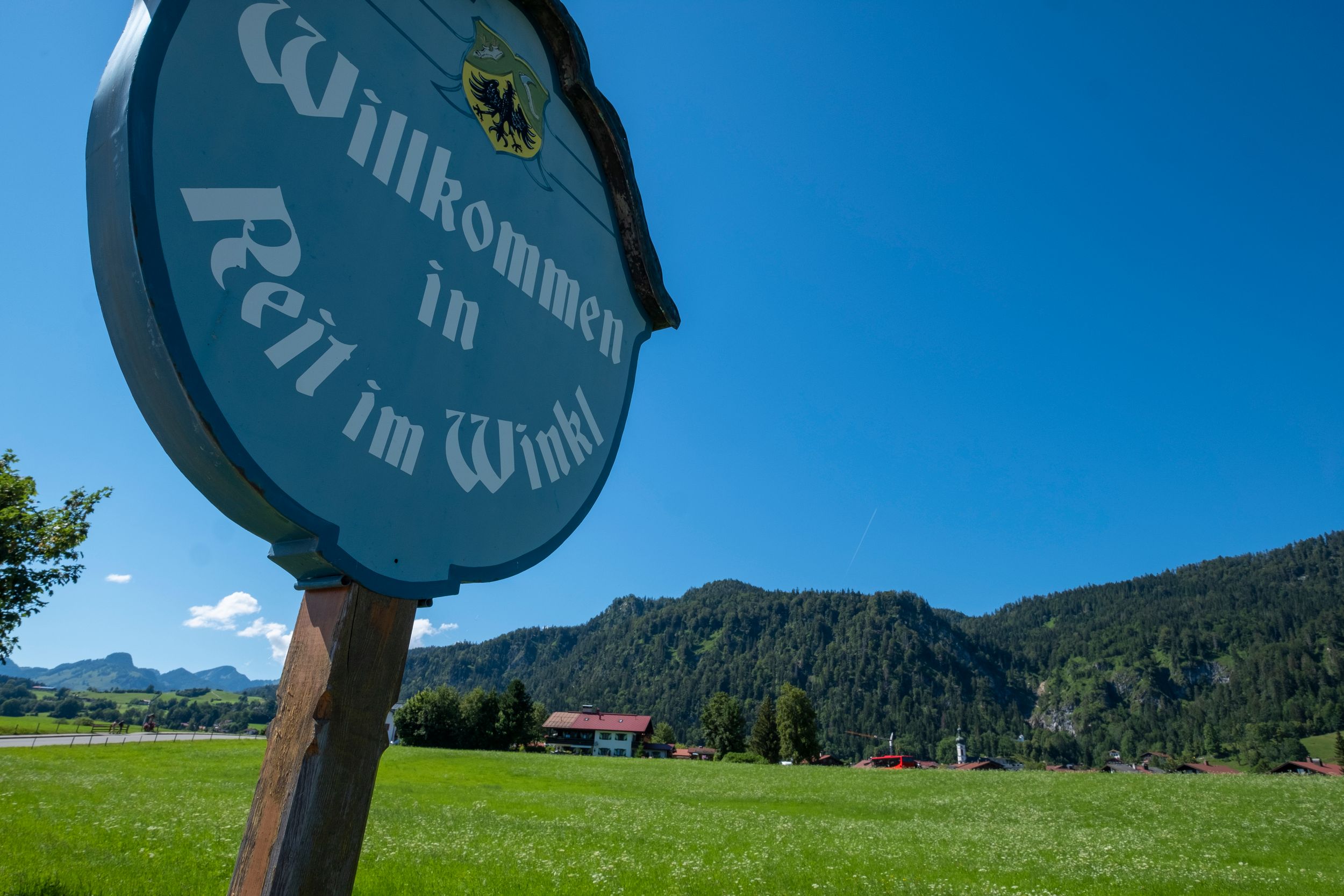Visible from afar, under free-standing linden trees, a wooden footbridge leads over a strange-looking rock formation - the Glacier Mill Field in Reit im Winkl. The rocks at the Wimmerkreuz are also known as the Glacier Garden.
Many know this place with the picnic table, the wayside cross, the grazing cows in summer, the cross-country skiers in winter, the wide view to the west to the Unterberghorn and the Kaiser mountain. But who knows the background to these gray stones?
The glacial mills at Wimmerkreuz were formed during the last ice age, the Würm ice age, about 10,000 to 12,000 years ago.

